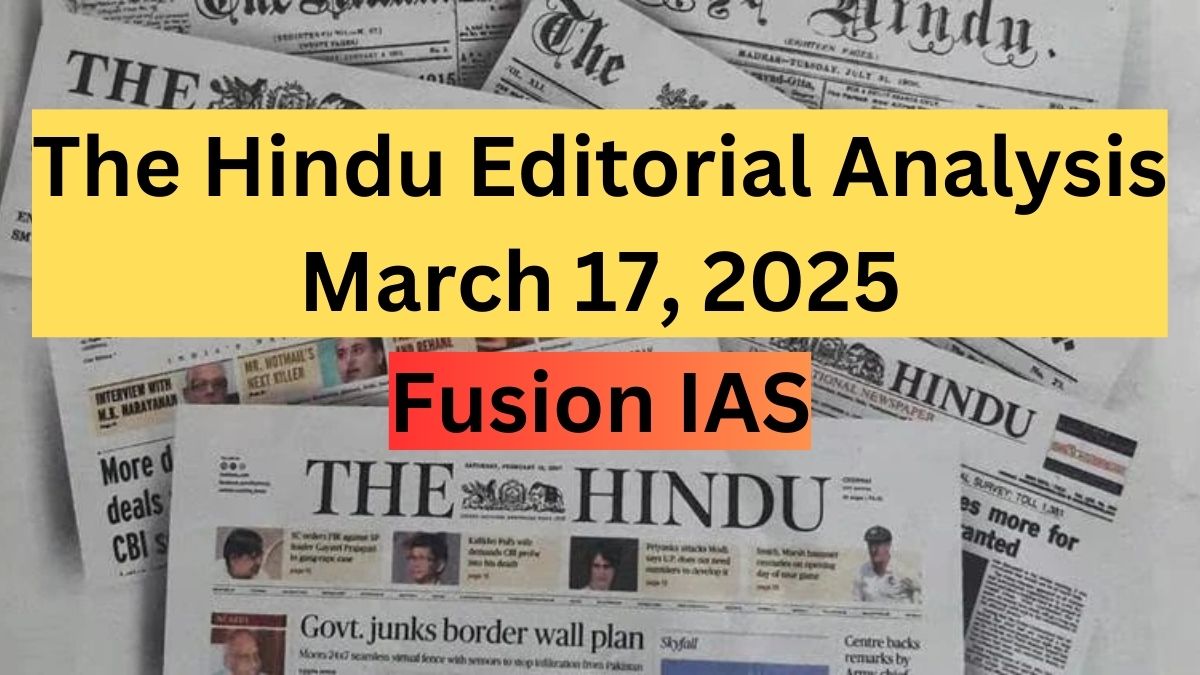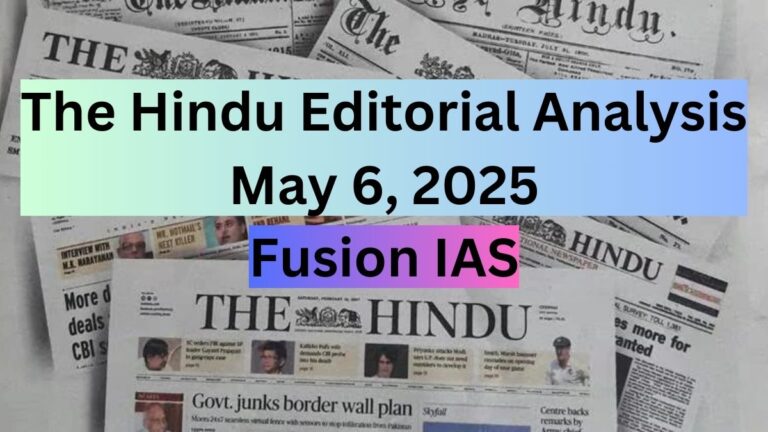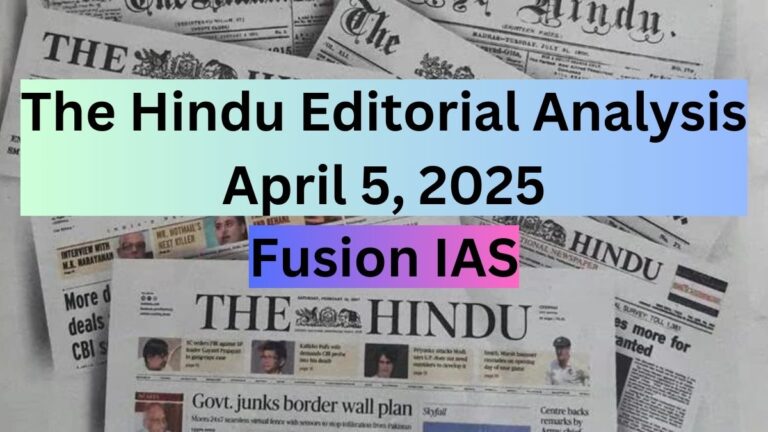
The Hindu Editorial Discussion is crucial for UPSC CSE preparation, offering in-depth analysis of current affairs, government policies, and socio-economic issues. It enhances critical thinking, answer-writing skills, and interview preparation by providing diverse perspectives on national and international developments. Regular editorial reading helps aspirants develop a balanced viewpoint, improving their essay writing and General Studies papers.
Terror on the train: on Pakistan and its Balochistan province
The recent attack on the Jaffar Express in Balochistan by the Baloch Liberation Army (BLA) has once again highlighted Pakistan’s internal security vulnerabilities. While Pakistan has accused India and Afghanistan of aiding the separatists, the real issue lies in Islamabad’s historical neglect of Balochistan. The province has long been a center of insurgency, fueled by economic deprivation, political marginalization, and allegations of human rights violations by security forces. This article analyzes the situation from a geopolitical and internal security perspective, relevant for UPSC aspirants.
Background of the Baloch Insurgency
(i) Historical Grievances: Balochistan, Pakistan’s largest but least developed province, has been demanding greater autonomy since the country’s independence in 1947. The current phase of insurgency started in the early 2000s, with militant groups like the BLA gaining prominence.
(ii) Resource Exploitation: Baloch nationalists argue that while the province is rich in natural resources (gas, minerals, and strategic ports like Gwadar), its local population remains impoverished.
(iii) Human Rights Violations: Allegations of enforced disappearances, extrajudicial killings, and military operations have worsened anti-state sentiments.
The Jaffar Express Attack and its Implications
(i) Nature of the Attack: The BLA hijacked the train to demand the release of imprisoned Baloch militants, leading to a 36-hour standoff. The heavy death toll (64 killed, including 33 militants) reflects the intensity of the confrontation.
(ii) Pakistan’s Response: The government has blamed India and Afghanistan, but such accusations divert attention from the underlying socio-political crisis.
(iii) Growing Insurgency: The BLA has escalated its operations, targeting infrastructure, security forces, and even Chinese investments, raising concerns for Pakistan’s economic and security policies.
Challenges Faced by Pakistan
(i) Security Dilemma: The simultaneous threats from Baloch separatists and Tehreek-e-Taliban Pakistan (TTP) have stretched Pakistan’s security apparatus.
(ii) Economic Strain: With a struggling economy and an IMF bailout, Pakistan lacks resources for counterinsurgency efforts and development projects.
(iii) Geopolitical Complexities: Pakistan’s reliance on the Afghan Taliban to control cross-border militancy has failed, leading to increased instability.
(iv) Failure of Military Strategy: Repeated military operations have not subdued the insurgency but have rather strengthened separatist narratives.
Way Forward for Pakistan
(i) Political Dialogue: Engaging with moderate Baloch leaders instead of relying solely on military action is crucial.
(ii) Economic Development: Investments in infrastructure, education, and employment opportunities can address long-standing grievances.
(iii) Decentralization of Power: Providing greater autonomy to Balochistan under a federal structure could help pacify separatist sentiments.
(iv) Counterterrorism Reforms: Rather than externalizing blame, Pakistan must improve internal security mechanisms and intelligence-sharing capabilities.
Conclusion
The Jaffar Express attack is a stark reminder that military responses alone cannot resolve Pakistan’s internal conflicts. Addressing Balochistan’s political, economic, and social grievances is key to ensuring long-term stability. For UPSC aspirants, this issue is significant in understanding insurgencies, regional geopolitics, and counterterrorism strategies.
Disclaimer:
This analysis is based on the editorial content published in The Hindu and is intended solely for informational and educational purposes. The views, opinions, and interpretations expressed herein are those of the author of original article. Readers are encouraged to refer to the original article for complete context and to exercise their own judgment while interpreting the analysis. The analysis does not constitute professional advice or endorsement of any political, economic, or social perspective.
Follow Fusion IAS


